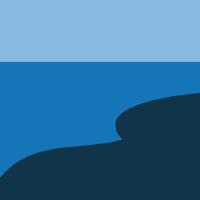Topic Editors


Ship Dynamics, Stability and Safety

Topic Information
Dear Colleagues,
Ship stability is one of the most important aspects of ship performance since it has a significant impact on the design and operation of ships and offshore structures. In the field of naval architecture, “stability” is a comprehensive concept which involves ship stability fundamentals with ship dynamics and ultimately ship safety. With the IMO development of Second-Generation Intact Stability Criteria (SGISC), research in the field of “Ship Dynamics, Stability and Safety” has received more and more attention within the community of naval architecture and marine engineering. This topic is intended to share the state of the art of ship stability, ship dynamics, and ship safety. Original contributions are expected. The topics of interest include but are not limited to:
- Parametric rolling;
- Pure loss of stability;
- Dead ship stability;
- Surf-riding/broaching;
- Over acceleration;
- Roll damping and anti-rolling devices;
- CFD based ship stability;
- Stability for specific types of vessels and floating structures;
- Ship stability in operation;
- Modeling of granular materials;
- Modeling of environment.
Prof. Dr. Zaojian Zou
Prof. Dr. Weilin Luo
Topic Editors
Keywords
- ship stability
- ship dynamics
- ship safety
- CFD
- ship operation
- ship design
- oceanic environment
Participating Journals
| Journal Name | Impact Factor | CiteScore | Launched Year | First Decision (median) | APC | |
|---|---|---|---|---|---|---|

Applied Sciences
|
2.7 | 4.5 | 2011 | 16.9 Days | CHF 2400 | Submit |

Inventions
|
3.4 | 5.4 | 2016 | 17.4 Days | CHF 1800 | Submit |

Journal of Marine Science and Engineering
|
2.9 | 3.7 | 2013 | 15.4 Days | CHF 2600 | Submit |

Oceans
|
- | - | 2020 | 45.2 Days | CHF 1600 | Submit |

Remote Sensing
|
5.0 | 7.9 | 2009 | 23 Days | CHF 2700 | Submit |

Sensors
|
3.9 | 6.8 | 2001 | 17 Days | CHF 2600 | Submit |

MDPI Topics is cooperating with Preprints.org and has built a direct connection between MDPI journals and Preprints.org. Authors are encouraged to enjoy the benefits by posting a preprint at Preprints.org prior to publication:
- Immediately share your ideas ahead of publication and establish your research priority;
- Protect your idea from being stolen with this time-stamped preprint article;
- Enhance the exposure and impact of your research;
- Receive feedback from your peers in advance;
- Have it indexed in Web of Science (Preprint Citation Index), Google Scholar, Crossref, SHARE, PrePubMed, Scilit and Europe PMC.

